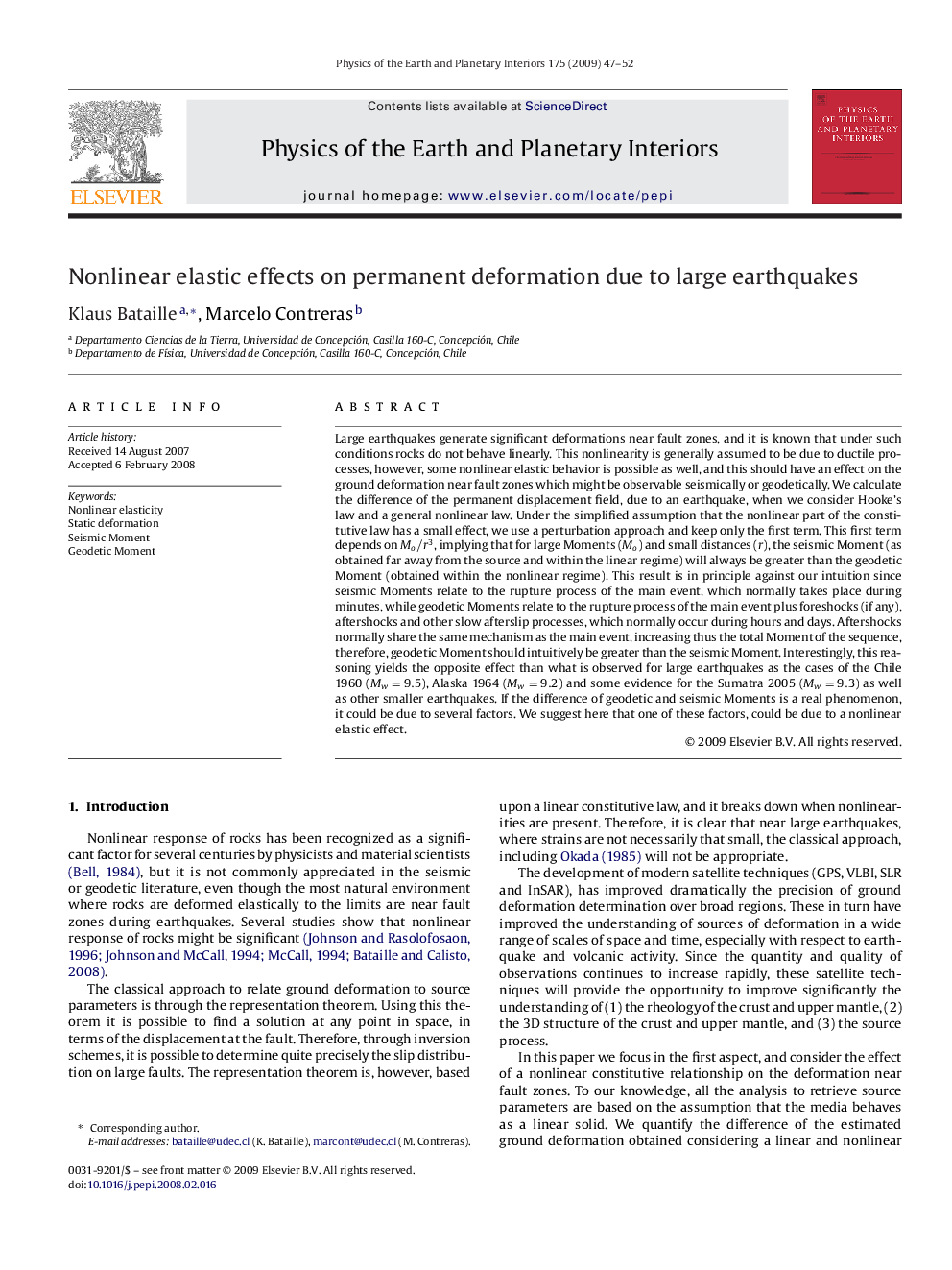| Article ID | Journal | Published Year | Pages | File Type |
|---|---|---|---|---|
| 4742397 | Physics of the Earth and Planetary Interiors | 2009 | 6 Pages |
Large earthquakes generate significant deformations near fault zones, and it is known that under such conditions rocks do not behave linearly. This nonlinearity is generally assumed to be due to ductile processes, however, some nonlinear elastic behavior is possible as well, and this should have an effect on the ground deformation near fault zones which might be observable seismically or geodetically. We calculate the difference of the permanent displacement field, due to an earthquake, when we consider Hooke’s law and a general nonlinear law. Under the simplified assumption that the nonlinear part of the constitutive law has a small effect, we use a perturbation approach and keep only the first term. This first term depends on Mo/r3Mo/r3, implying that for large Moments (MoMo) and small distances (r ), the seismic Moment (as obtained far away from the source and within the linear regime) will always be greater than the geodetic Moment (obtained within the nonlinear regime). This result is in principle against our intuition since seismic Moments relate to the rupture process of the main event, which normally takes place during minutes, while geodetic Moments relate to the rupture process of the main event plus foreshocks (if any), aftershocks and other slow afterslip processes, which normally occur during hours and days. Aftershocks normally share the same mechanism as the main event, increasing thus the total Moment of the sequence, therefore, geodetic Moment should intuitively be greater than the seismic Moment. Interestingly, this reasoning yields the opposite effect than what is observed for large earthquakes as the cases of the Chile 1960 (Mw=9.5Mw=9.5), Alaska 1964 (Mw=9.2Mw=9.2) and some evidence for the Sumatra 2005 (Mw=9.3Mw=9.3) as well as other smaller earthquakes. If the difference of geodetic and seismic Moments is a real phenomenon, it could be due to several factors. We suggest here that one of these factors, could be due to a nonlinear elastic effect.
